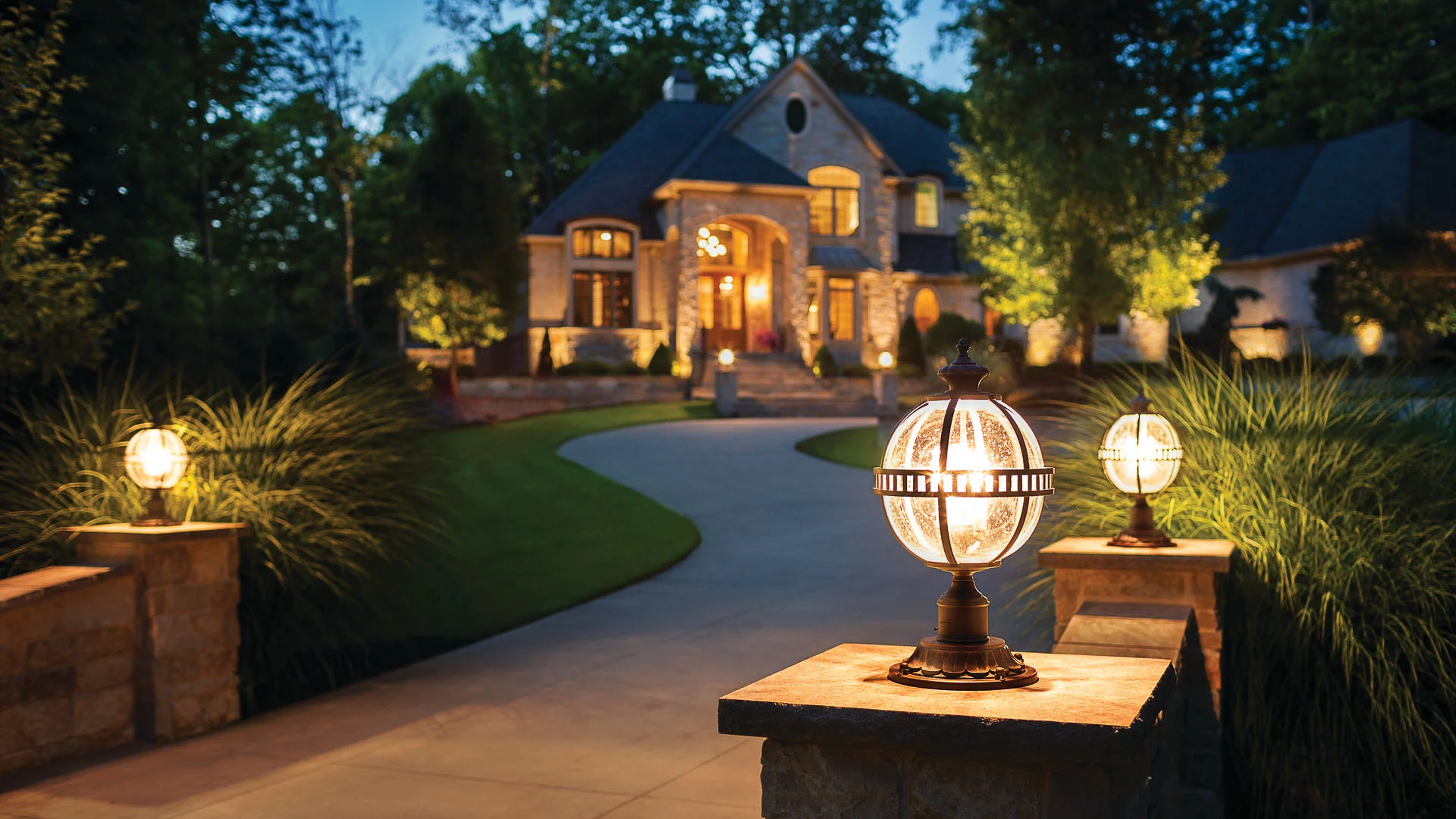A guide to outdoor lighting

Lighting is an essential component of interior and exterior home design.Not only does lighting add style and make spaces more appealing, when done correctly, it also makes a home safer and more functional.
Homeowners who plan to utilize outdoor spaces like backyards, front porches and walkways to the fullest should think carefully about lighting. These guidelines can assist with selecting outdoor lighting fixtures.
Security lighting
Flood lights and security lights are a good investment for those who want to beef up visibility and security around the home. These lights are high-intensity and designed to illuminate large areas. The brightness and reach can serve as a preventive measure to keep animals and even criminals away.
Read More : A Beginner’s Guide to Designing and Installing Outdoor Lighting Motion-sensor lights will immediately engage if something crosses the path of the sensor. Some lights will remain on from dusk until dawn. Lowes Home Improvement suggests using the correct wattage on outdoor security lights so they flood an area thoroughly without affecting neighboring properties.
Wall, post and ceiling lights
Outdoor lighting fixtures beyond security options come in a variety of styles, according to Lamps USA. Wall lights are mounted to the outdoor wall of the home. These typically flank doorways or the garage. Post lights are often installed on the posts of decks and porches, or are free-standing on properties, providing visibility but also style. Ceiling-mounted lights may be above doorways or installed in any structure that has an overhead area.
Warm-colored temperature bulbs in these fixtures can create an inviting atmosphere that is not too bright and jarring, especially when multiple lighting fixtures are working together.
When selecting lighting for wall-mounted fixtures, experts suggest sizing up if you are not sure of the size to pick, as lights will look much smaller in scale from a distance.
Accent and landscape lighting
A bevy of accent lighting choices are available. Accent lighting is designed to enhance the mood and appearance of certain elements of a landscape.
Accent lighting is not intended to add bright light. For example, upward-directed lights can be cast on trees or shrubs to accentuate their shapes. Accent lighting also may call out a structure, such as a garden or a fountain.
While accent lighting may be hard-wired, homeowners who want the luxury of changing lighting can opt for solar fixtures, which are more mobile but not as bright.
Additional pointers
When shopping for bulbs, consider the number of lumens. A standard 100-watt bulb produces around 1,600 lumens. Security lights should range from 700 to 1,300 lumens for optimal brightness. Other lights needn’t be so bright.
Furthermore, ensure that any fixtures that are being used are safety-rated for outdoors.
Wet-rated fixtures are designed to withstand direct exposure to outdoor elements, advises the design experts at Schoolhouse, a lighting and lifestyle goods company. Damp-rated fixtures are built for outdoor locations protected from harsh weather.
Look for the product details or work with an electrician to choose the right lighting choices.
Lighting can transform outdoors spaces for the better.
Homeowners who plan to utilize outdoor spaces like backyards, front porches and walkways to the fullest should think carefully about lighting. These guidelines can assist with selecting outdoor lighting fixtures.
Security lighting
Flood lights and security lights are a good investment for those who want to beef up visibility and security around the home. These lights are high-intensity and designed to illuminate large areas. The brightness and reach can serve as a preventive measure to keep animals and even criminals away.
Wall, post and ceiling lights
Outdoor lighting fixtures beyond security options come in a variety of styles, according to Lamps USA. Wall lights are mounted to the outdoor wall of the home. These typically flank doorways or the garage. Post lights are often installed on the posts of decks and porches, or are free-standing on properties, providing visibility but also style. Ceiling-mounted lights may be above doorways or installed in any structure that has an overhead area.
Warm-colored temperature bulbs in these fixtures can create an inviting atmosphere that is not too bright and jarring, especially when multiple lighting fixtures are working together.
When selecting lighting for wall-mounted fixtures, experts suggest sizing up if you are not sure of the size to pick, as lights will look much smaller in scale from a distance.
Accent and landscape lighting
A bevy of accent lighting choices are available. Accent lighting is designed to enhance the mood and appearance of certain elements of a landscape.
Accent lighting is not intended to add bright light. For example, upward-directed lights can be cast on trees or shrubs to accentuate their shapes. Accent lighting also may call out a structure, such as a garden or a fountain.
While accent lighting may be hard-wired, homeowners who want the luxury of changing lighting can opt for solar fixtures, which are more mobile but not as bright.
Additional pointers
When shopping for bulbs, consider the number of lumens. A standard 100-watt bulb produces around 1,600 lumens. Security lights should range from 700 to 1,300 lumens for optimal brightness. Other lights needn’t be so bright.
Furthermore, ensure that any fixtures that are being used are safety-rated for outdoors.
Wet-rated fixtures are designed to withstand direct exposure to outdoor elements, advises the design experts at Schoolhouse, a lighting and lifestyle goods company. Damp-rated fixtures are built for outdoor locations protected from harsh weather.
Look for the product details or work with an electrician to choose the right lighting choices.
Lighting can transform outdoors spaces for the better.
Source: www.republic-online.com
Useful Links:
